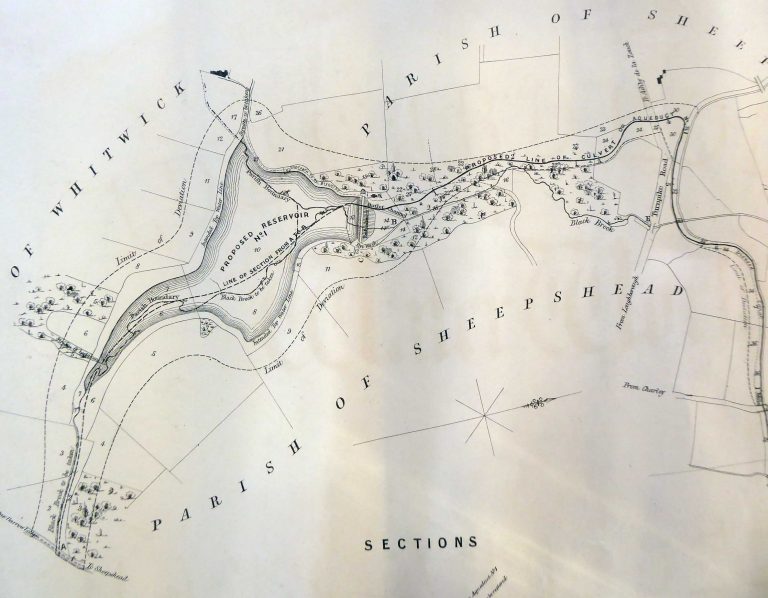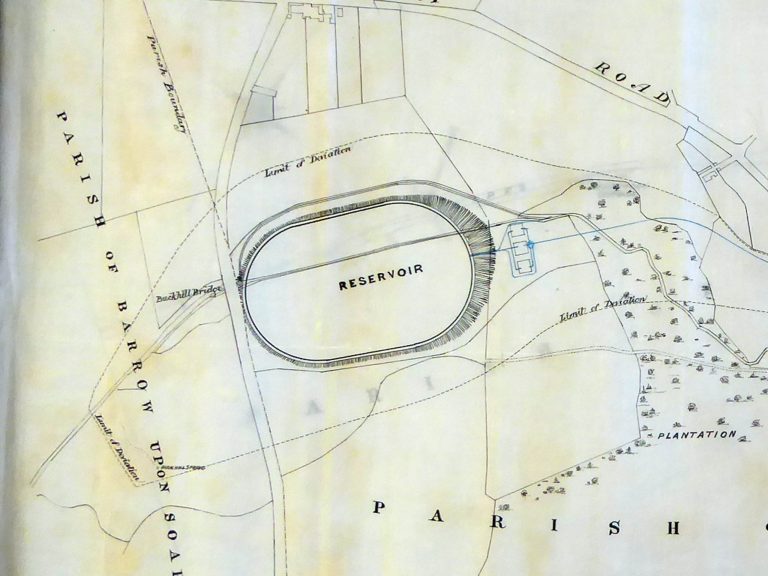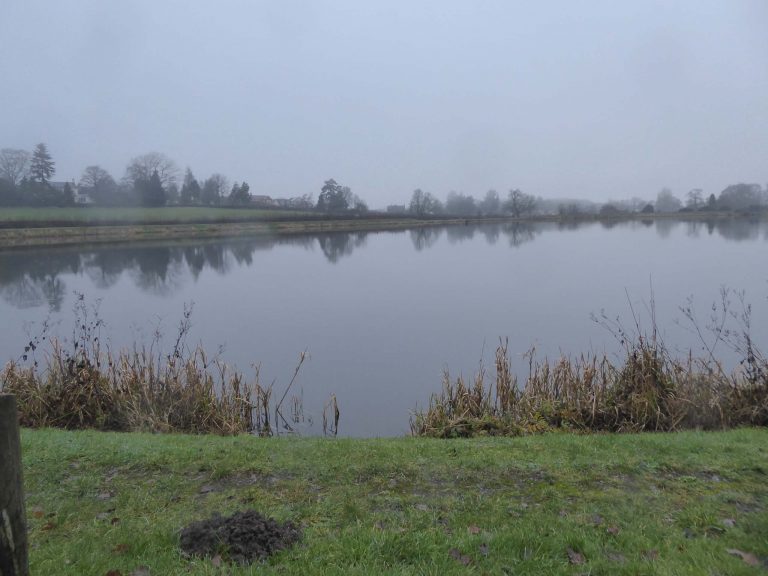The Loughborough Waterworks Company
The ‘drainage’ was laid in 1854-5. In 1857, the board spent £1,700 on paving some streets. By the mid 1860s it still appeared that the board were going to do nothing about a water supply. Henry Fearon and others decided they needed to force the issue. In 1866, Fearon and others made plans to form the Loughborough Waterworks Company, through an Act of Parliament enabling them to lay on piped water to the town, taking the supply from the Black Brook. They also produced detailed plans, and submitted these to the county magistrates at the Quarter Sessions.

The Board quickly reacted by producing their own proposals. They were concerned that the private company would acquire a monopoly over water supply and would take the profit. Additionally, the Sanitary Act of 1866 required a local board of health to supply water if there was an outbreak of infectious disease, the water supply was inadequate and ten ratepayers made a complaint. If the Waterworks Company went ahead, the board would be compelled to buy water from them.
For a Board which appears until then to be reluctant to spend money, their counter-proposal may have surprised many. Their plans included taking a water supply from the Wood Brook and storing water in a reservoir they would build at Nanpantan, taking over the works of the gas company and buying the right to the market tolls from the lord of the manor. They also requested yet another engineer, to produce a comparison of the private company’s scheme for a water supply from the Blackbrook and their own plans for a supply from the Wood Brook, which could be put to the ratepayers.


The Wood Brook plan was cheaper, and although the water supply appeared barely sufficient, it would be possible to supplement it with water from the Black Brook if that proved necessary. The private company agreed to withdraw if the board proceeded with the Wood Brook plan.
The scheme was completed by the local board of health in 1870. Nine acres of land were purchased at Nanpantan and a reservoir was built, with a capacity of 29 million gallons.
